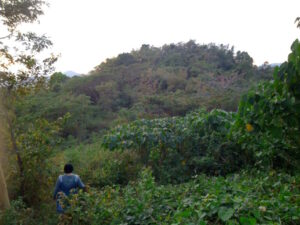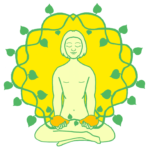A lot of people are asking us how we live in an isolated house near the mountains. In this post, I will explain a bit about the house(hold) and its management.
Electricity
On our roof, we have 4 solar panels of 150 Watts, each connected in series for a total of 600 Watts, which charges three 12-Volt batteries controlled by an MPPT panel.

For reasons not entirely known, the solar panel system does not work correctly; we usually do not have enough electricity. For example, we need to turn off our refrigerator every day when it becomes dark at 6:00 PM and turn it on again at around 8:00 AM or 9:00 AM.
If it has been raining or cloudy the whole day, we might already have to turn off the ref at around 2:00 PM or 4:00 PM. Even though we need to turn off the ref at night, most of the time our ref stays cool enough for the food not to spoil.
Machines
We have a washing machine, but it draws so much power that it only works at noon when the sun is at its brightest – even if a small cloud passes by the sun, the washing machine will suddenly turn off. My wife usually wash our clothes with her hands. We also charge all our other electrical devices such as phones and laptops at 11:00 AM.
We do not have a TV, but we do have a radio. On our roof, we have an antenna that can receive and boost 4G or H+ mobile signal which we use for receiving prolonged internet. We turn off the antenna and booster whenever we are not using the internet to save electricity.
In the kitchen, we do not use any electrical devices. We have no microwave, no oven, no blenders, no rice cookers, no toasters, no dishwasher, no coffee or tea machines, no electric kettle, and so on. Just an LPG gas-powered stove and a knife. We need to buy a new gas tank around every 2 to 3 months.

Water
In the bathroom, we have no heated shower. Our water comes from the river beside our land. We bought a gas-powered water pump that pulls water from the river. That water is stored in an elevated tank.
Several months before we bought the water pump, our water came from the mountains. We used a very long black tube that transported the water. The black tube moved its way through dense thickets of the jungle and open areas of farmland.
In the areas where the black tube was exposed to the sun, the water inside it heated up to near 80 degrees Celsius. It was so hot that it burned our skin. That’s why from around 9:00 AM to 3:00 PM we had the most scalding water.
However, when it was raining or cloudy or night, the water cooled down to an icy chill. We stored around 350 liters of water in a blue container in the bathroom and tried to keep it filled as much as possible. The stored water is quite cold so when the water coming out of the black tube was too hot to handle we mixed it with the cold stored water to make the temperature just right for taking a bath.
The main reason we stored water was that the black tube broke a lot. Usually, it broke 1 to 4 times per month, and then we were without clean water for several days up to almost a week.
If the black tube broke on our land we needed to fix it ourselves, and if it broke on someone else’s land, we needed to wait for them to fix it. The black tube was connected to multiple houses and spanned many different lands so it was a shared responsibility.
Several times the black tube of my neighbor broke and it leaked water all over my land, causing a flood that killed 2 of my trees and almost a third one if I had not dug up the small tree and moved it somewhere else.
The black tube completely broke at one point, and then we had to save money to finally buy our gas-powered water pump which we now use today.
We also have a manual water pump. Both manual and gas-powered pumps draw water from the river on the side of our land.

We often used the manual water pump when the black tube broke, but the water from it is dirty and unsuitable for drinking. So after buying the water pump, we installed a water filter on our sink. Before, we would purchase blue jugs from the town proper to get drinking water. Now we have our independent water system.

Our Sink with Water Filter
Recycling Water
The water from our kitchen sink, bathroom sink, and bathroom floor, so all the grey water goes out of our house through pipes into a small canal that flows into a pond downhill. We filled the canal and pond with Kangkong (Chinese water spinach) and Taro together with various grasses and weeds.
These plants filter the water and use up whatever organic matter in the grey water as nutrients. Because our toilet cannot flush itself, we need to flush it manually by pouring a bucket of water into the bowl.
We use the wastewater of our laundry or any other dirty water available to flush the toilet to save water. In the rainy season, we try to catch as much rainwater as possible in large drums positioned outside.
Waste Management
We separate our wastes into two categories: organic waste (nabubulok) and inorganic waste.
The organic waste is already rotten and spoiled and is thrown on the sacred compost. The inorganic waste consists mainly of plastic, glass, and metal. All the plastic is burned in a garbage burning pit, and the glass and metal are thrown to the sides of the hole because garbage collection services do not exist here. I have not yet figured out what to do with all the glass and metal slowly building up in a pile.
The way we live is very different from the city. I am sure city dwellers consider us primitive, but we are relatively modern compared to the other people who live here in the countryside. For example, others do not even have gas and still use wood for cooking and have no solar panels nor internet antennas.
Although our house is sometimes tough to manage, it is also very satisfying. We pay for internet and gas, but we do not pay for water nor electricity. Although most of the time our supplies run out, I genuinely love living here and being close to nature.






1 thought on “How We Live In An Isolated House At The Foot Of The Mountains”
Pingback: Dreaming My Life Away - Jihatsu Eco Farm